CMS White Label
- Xibo for Android
- DSDevices DSCS9X/95 Set-up Guide
- Install a White Label or a different Player version on DSDevices
- CEC Screen Power on/off with DSDevices
- Hardware Recommendations
- Philips Signage SoC Monitors
- Sony Bravia SoC
- Hisense Commercial Displays SoC
- Managing Storage on the Android Device
- Player Settings
- Players without an Internet Connection
- Remote Administration with SS Helper
- Restart Rooted Device with a Shell Command
- Running Xibo for Android
- Resolving Common Issues
- Error shown when I try to licence my Player?
- Player not updating from the CMS?
- I can see my Licence entry but the Player appears unlicensed?
- Error message - Player is missing dependencies
- My scheduled Layouts are not working?
- Layout won't play? Splash screen plays?
- Watchdog error message
- Troubleshooting for Administrators
- Audit Trail
- Log Information
- Player Logs
- Getting the Player Status
- Request Player Status via CMS - Logged in Players only
- Request Player Status directly from a Device
- Can I use the Xibo name / logo?
- Can I run a Xibo Player on Raspberry Pi?
- How can I increase the upload file size limit?
- How do Players communicate with the CMS?
- How many displays can Xibo support?
- How do I reset the Xibo_admin account password?
- Power On/Off for Players
- Why do I need a Default Layout?
- Xibo for Android FAQ's
- Gapless Playback
- Autoplaying Embedded Youtube Videos
- Closing to Home screen
- Displaying Images
- Embedded TV
- External SD card not listed when running Banana-Pi
- Helper Command to change Time zone
- HTML5 Video
- Memory Notifications
- Menu not accessible
- SSL Support
- Using Portrait Displays
- Video wont play properly
CMS White Label
Once purchased, from My Account click on the White Label button and click to Configure to provide the branded resources to make the build.
Customers that have an accepted Alternative Provision of Licence will have an additional License tab to remove the source and about links and provide About Text for the Xibo About page.
Once configured, hit the build button to queue:


The build status will go through the process of Queued > Building > Built or Error.
With an Error status, issues need to be rectified in the configuration before attempting a further build.
- Check all fields have been completed with no missing information.
- Ensure that the uploaded images are in the specified formats.

Building can take up to 10 minutes in some circumstances as it is dependant on the type of white label build and how busy the service is.
Once the build is complete and ready to be downloaded, an email notification will be sent to the address that was entered in the ‘Notify when built’ field.

Xibo Cloud Hosting
Themes can be automatically applied to a new CMS instance using the Theme selector when adding new CMS instances to your account.
To apply a theme to an existing Xibo Cloud hosted CMS instance, please open a Ticket
Self-Hosted Docker
In a docker environment, the theme name folder should be copied to /shared/cms/web/theme/custom/ (custom folder might need to be created manually)
For example, if your theme name is ‘Xibo’, then in the downloaded archive you will find theme/Xibo folder, you will want to copy the ‘Xibo’ folder to the path specified above, the end path to your white label theme should be:
/shared/cms/web/theme/custom/Xibo
Where ‘Xibo’ is an obvious example, it will be your own theme name in the downloaded archive with White Label CMS theme.
The manual folder from the archive, should be copied to shared/cms/web/userscripts/, meaning the full path will be shared/cms/web/userscripts/manual
Once files are in place, log in to the CMS and navigate to the Settings page under the Administration section of the main CMSmenu.
- On the Configuration tab, select your theme in the CMS Theme dropdown.
- Go to the General tab, enter the following as the ‘Location of the Manual’
userscripts/manual/en/
Please ensure you clear your browser cache (shift+F5 ) to see your custom theme applied to your CMS Instance.
Self-Hosted Custom/Manual
The theme name sub-folder should be copied to the following path /web/theme/custom/.
For example, if your theme name is ‘Xibo’, then in the downloaded archive you will find theme/Xibo folder, you will want to copy the ‘Xibo’ folder to the path specified above, the end path to your White Label theme should be:
/web/theme/custom/Xibo
Where ‘Xibo’ is an obvious example, it will be your own theme name in the downloaded archive with White Label CMS theme.
The manual folder can be placed anywhere in the /web folder in the CMS Installation, for the purpose of this guide we will put it in the same place as in the docker installation, in this case in /web/userscripts/manual (userscripts folder will need to be created manually).
Once files are in place, log in to the CMS and navigate to the Settings page under the Administration section of the main CMSmenu.
- On the Configuration tab, select your theme in the CMS Theme dropdown.
- Go to the General tab, enter the following as the ‘Location of the Manual’
userscripts/manual/en/
Please clear your browser cache (shift+F5 should suffice) to see your custom theme applied to your CMS Instance.
SQL Files The SQL files in the archive should not be copied - they are provided as examples of the changes we recommend for installation. If the CMS is already configured in a suitable manner then do not run these files.
If the files are not, run then CMS setting for GLOBAL_THEME_NAME should be updated to suit the new theme - the following SQL can be used:
UPDATE `setting` SET `value` = 'THEME_NAME', userSee = 0 WHERE `setting` = 'GLOBAL_THEME_NAME' ;
If you want to run the above (or other) sql on your docker installation please see the following topic: How can I run a SQL command when using a Docker Install?

Xibo CMS White Label - Example
This section gives a detailed overview of the parts of the CMS which can be customised with a white label.
General - example:
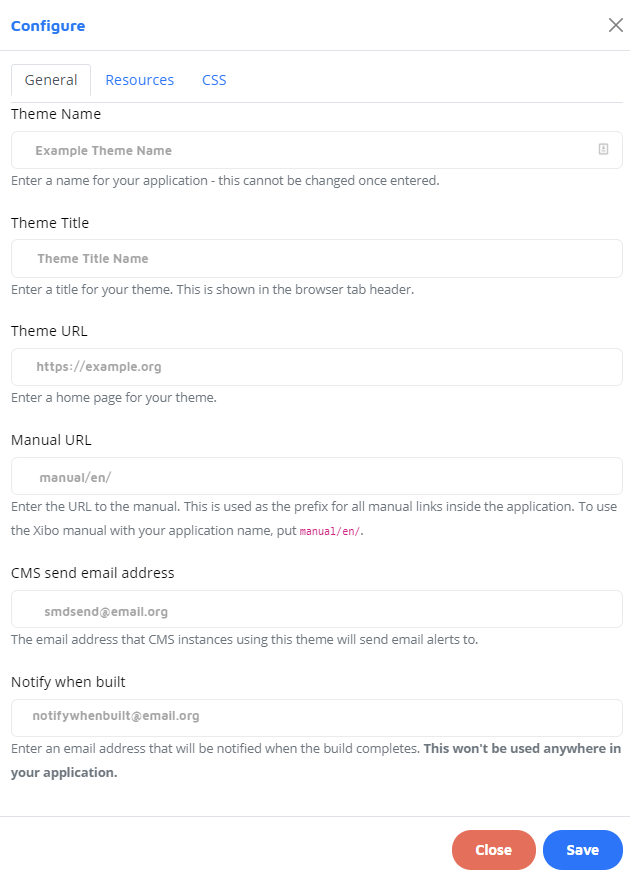
Resources - example:
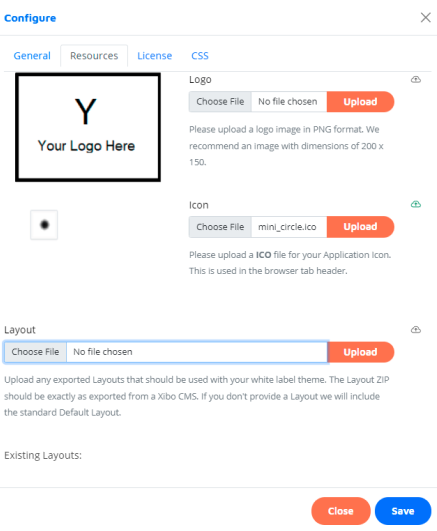
This example theme was built with the options to remove the “Source” and “About” from the login page, and so further configuration options are made available from the License tab.
License - example:
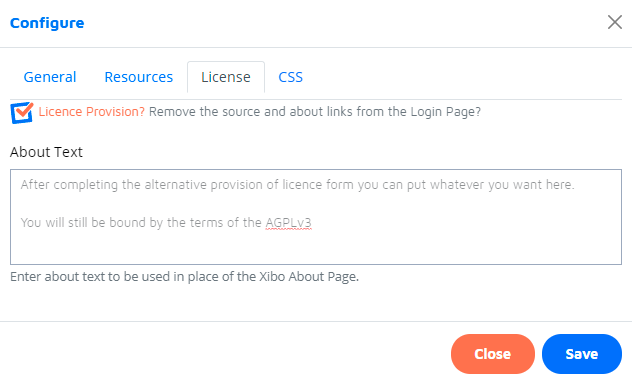

CSS Colour Override - example:
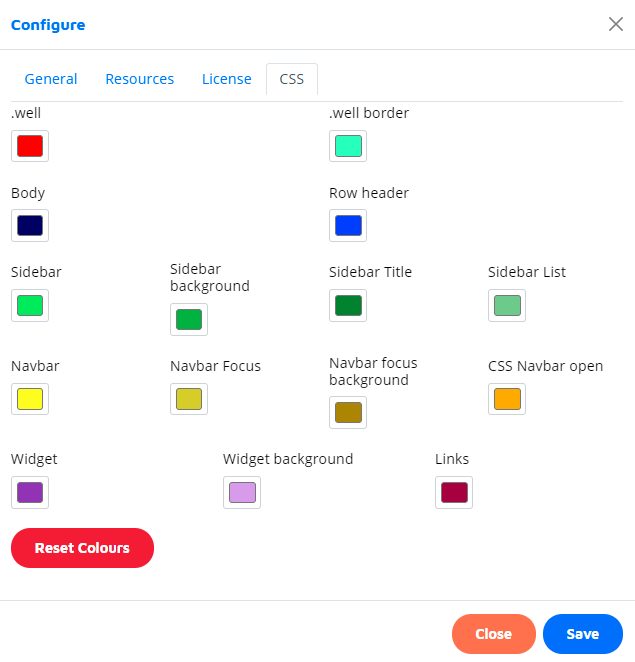
Open a colour and use the arrows at the very bottom to scroll down to enter the HEX code directly if known.
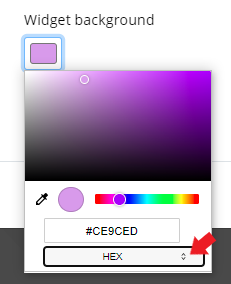
We have opted to use bold colour choices for easier identification of where the colours will be shown for the CMS!

Once built, this example theme was deployed on the Xibo Cloud Hosting service. The following screenshots show the resulting theme:
Login Page
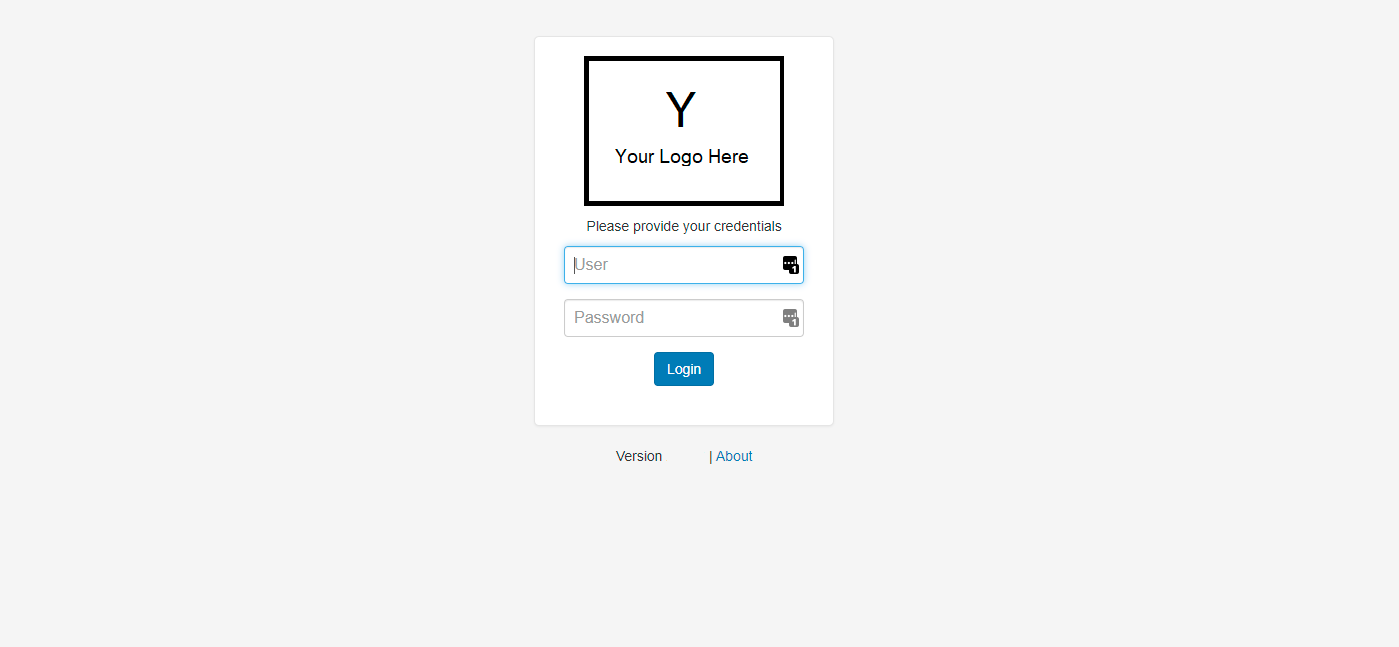


About

The CMS Dashboard
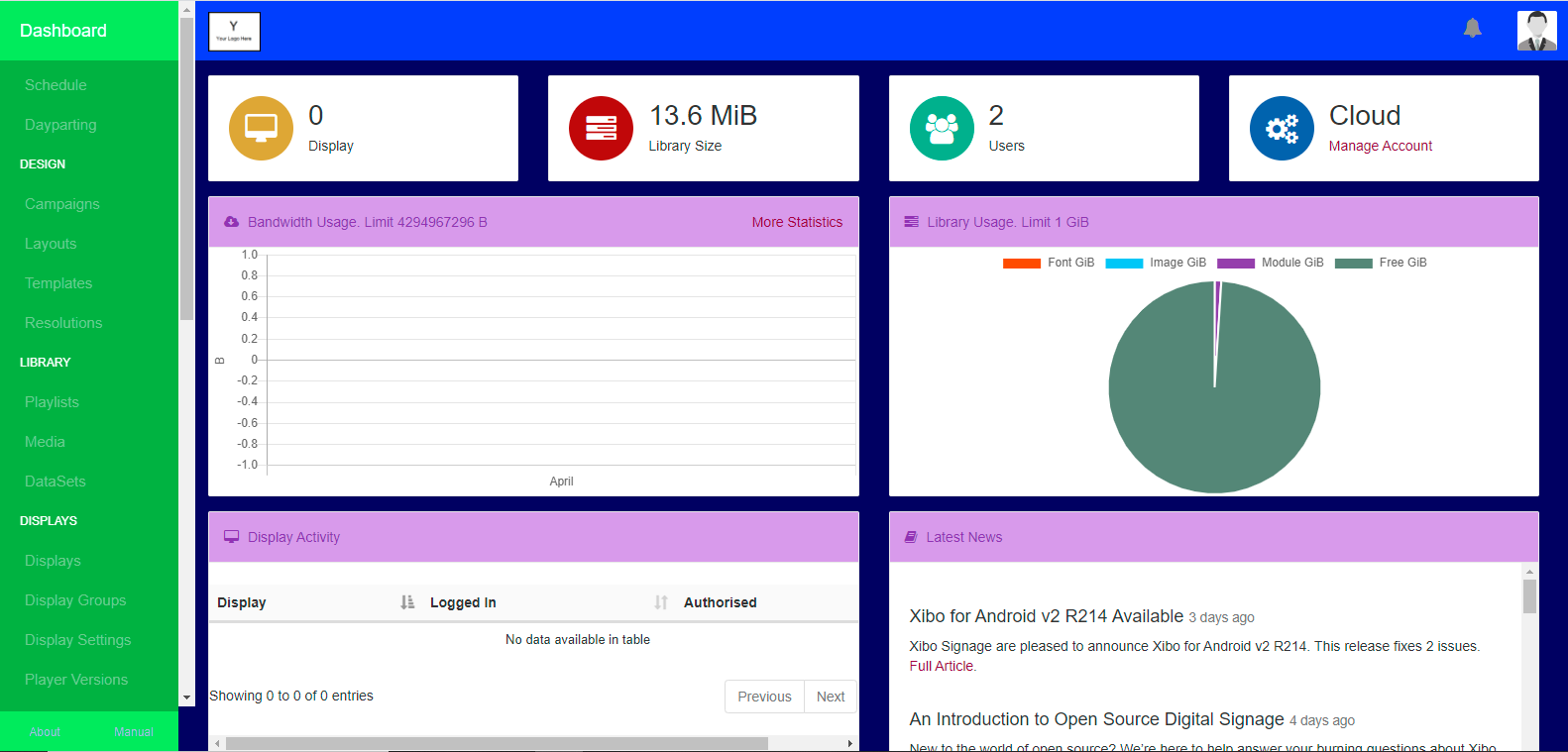
Navigation Bar
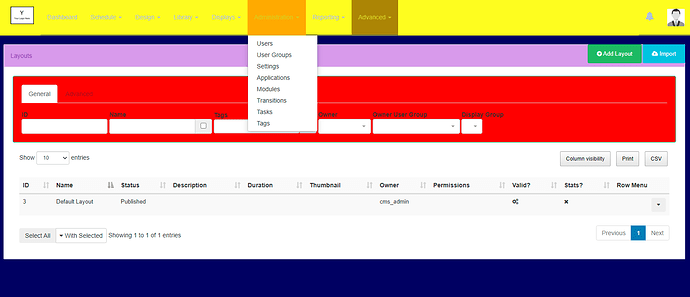
User Manual
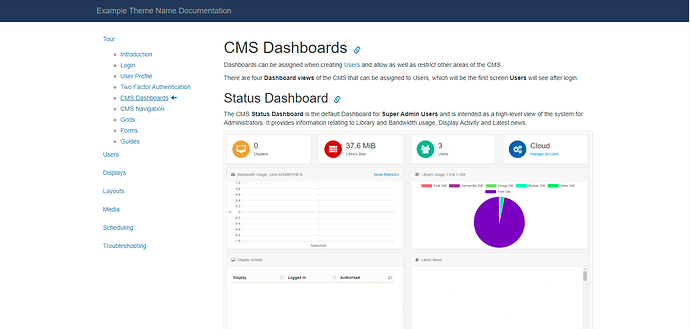
Layout Grid
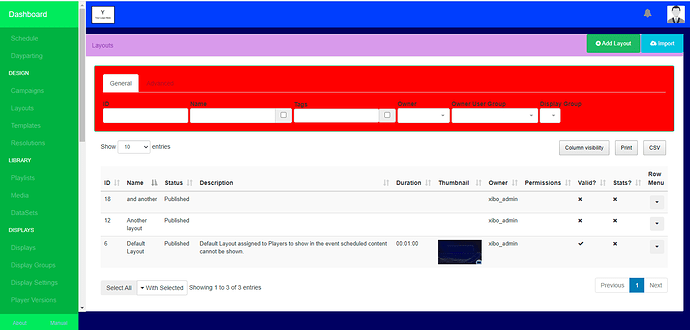
Layout Designer
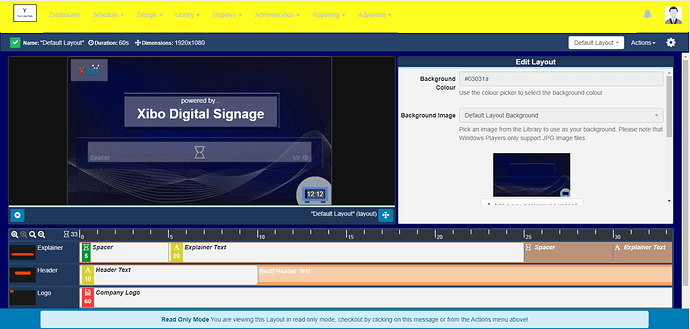
Tab

All other aspects of the CMS installation will be as they would in a standard CMS install


